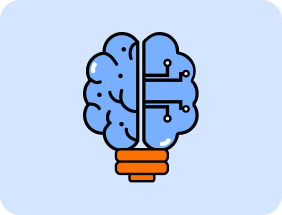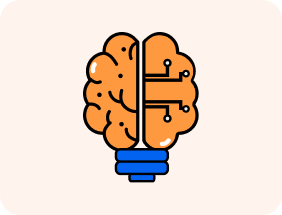The Hidden Cost of Passive Learning and How Metacognition Fixes It?
Many students follow a routine of reading notes, listening to lectures, and memorizing facts without truly understanding or thinking about what they’re learning. This is known as passive learning, and while it may feel comfortable, it often leads to poor results.
The problems with passive learning include low engagement, weak understanding, and poor long-term memory. In contrast, metacognition, thinking about how you learn, can help students become more active, aware, and effective learners. By improving their learning habits and using metacognitive learning strategies, students can move from memorizing to truly mastering concepts.
This article explores active learning vs passive learning and shows how metacognition can transform the way students study and succeed.
What Is Passive Learning?
Passive learning is when students receive information without actively engaging with it. This usually happens when learners just read textbooks, listen to lectures, or watch videos without questioning, discussing, or applying the knowledge.
They might copy notes or memorize facts for a test, but they aren’t really thinking deeply or checking their own understanding.
The main problem with passive learning is that it leads to shallow understanding. Students might remember information for a short time, but they often forget it quickly because they haven’t truly connected with it. There’s little room for reflection, problem-solving, or building strong learning habits. This makes it hard to apply what they’ve learned in real-world situations or future lessons.
► Why It’s More Common Than You Think?
Passive learning is more common than we realize, especially in traditional classrooms where students are expected to sit quietly and take notes while the teacher talks. Many students grow up in systems that reward memorization over thinking. They believe that being a good student means listening and repeating, rather than asking questions or solving problems. This makes active learning vs passive learning a key challenge in modern education.
Also, with the rise of digital content, like online lectures, tutorials, and study videos, students often consume information passively without engaging deeply. Without guidance on metacognitive learning strategies, they don’t stop to ask, “Do I really understand this?” or “How can I apply this idea?”
This is why building awareness of metacognition is so important. It teaches students to take control of their learning and make smarter, more active choices in how they study and grow.
The Hidden Costs of Passive Learning
Many students spend years learning in ways that seem easy and comfortable, listening to lectures, reading notes, or watching videos. But these methods often fall into the category of passive learning, where students take in information without truly interacting with it. Over time, this learning style can lead to several hidden problems that affect academic performance, personal growth, and future success.
Let’s explore the main problems with passive learning and understand why it holds students back from becoming confident, independent thinkers.
► Poor Retention and Shallow Understanding
One of the biggest downsides of passive learning is poor long-term memory. When students simply memorize facts without thinking deeply about them, the information doesn’t stick. They may remember details for a test, but quickly forget everything afterward.
This happens because passive learning skips the steps of analysis, reflection, and application, key parts of metacognitive learning strategies that help build stronger memory and understanding.
Without using metacognition, students don’t ask themselves if they really understand the topic. They don’t check whether they can explain it in their own words or apply it to new situations. This results in shallow understanding, where knowledge feels disconnected and easily lost.
► Low Engagement and Motivation
Students often feel bored or unmotivated when learning passively. Why? Because passive activities like reading slides or listening quietly don’t require the brain to stay active. There’s no challenge, no choice, and no real involvement.
In contrast, active learning vs passive learning shows that students are more motivated when they participate, ask questions, or solve problems.
They feel a sense of ownership and purpose. Without these opportunities, passive learning creates a classroom environment where students go through the motions without truly caring about what they’re learning. Over time, this leads to low energy, lack of interest, and even burnout.
► Dependence on External Guidance
Another hidden cost of passive learning is that students become overly dependent on teachers, tutors, or textbooks. They wait to be told what to learn and how to study, instead of developing their own learning habits.
This makes it hard for them to work independently, especially when faced with new topics, projects, or challenges.
Metacognition helps fix this by teaching students to plan their learning, track their progress, and reflect on their mistakes. These skills lead to independence and self-direction, traits that are essential for college, careers, and lifelong learning.
► Weak Problem-Solving and Critical Thinking Skills
Passive learning focuses mostly on remembering information, not on using it. As a result, students may struggle with real-world problems that require analysis, decision-making, or creativity. They may not know how to break down a complex question, connect ideas, or think critically.
These are the skills that employers, educators, and society value most and they come from metacognitive learning strategies, not from rote learning. When students practice thinking about their own thinking, they build the ability to evaluate information, solve problems creatively, and make smarter choices.
How Metacognition Fixes the Problems of Passive Learning?
Many of the problems with passive learning, like low motivation, poor memory, and weak critical thinking, can be solved by using metacognition. Metacognition means “thinking about your thinking.” It helps students become more aware of how they learn, what strategies work for them, and how to improve over time.
Let’s look at how metacognitive learning strategies can transform passive students into confident, successful learners.
► Turning Students into Active Thinkers
The biggest shift that metacognition brings is helping students become active learners. Instead of just listening or memorizing, students start asking important questions like:
“Do I really understand this?”
“What’s the best way to study this topic?”
“What should I do differently next time?”
This self-questioning turns passive learning into active thinking, which leads to better focus and deeper understanding.
► Encouraging Deeper Learning and Retention
When students use metacognitive learning strategies, they go beyond surface-level memorization. They learn how to organize information, make connections between topics, and reflect on what they’ve studied. This helps the brain store knowledge more effectively, which improves learning habits and long-term memory.
Unlike passive learning, which often fades quickly, metacognitive learning helps students truly understand and remember what they learn.
► Building Self-Awareness and Independence
Students who practice metacognition become more aware of their strengths, weaknesses, and learning styles. This self-awareness helps them choose better study techniques and become less dependent on teachers or tutors. They begin to take responsibility for their own learning, a big step toward becoming independent, lifelong learners.
► Enhancing Academic Performance Over Time
Over time, students who use metacognitive strategies see real improvement in their academic performance. They’re able to learn smarter, adapt to different subjects, and handle challenges with more confidence. This long-term success isn’t possible through passive learning, which often relies on last-minute cramming or guesswork.
In short, metacognition fixes the gaps left by passive learning by helping students become thoughtful, strategic, and self-directed learners, skills that benefit them in every stage of life.
Simple Metacognitive Strategies for Everyday Learning
The good news is that metacognitive learning strategies are easy to practice in daily study routines. Students don’t need any special tools, just a willingness to think about how they’re learning.
Here are some simple ways to develop better learning habits through metacognition:
► Reflection Journals and Self-Assessment
After each study session, students can write a few lines about what they learned, what they found difficult, and what they need to review. Self-assessment helps them identify gaps in understanding and encourages improvement. This builds both awareness and accountability.
► Goal Setting and Study Planning
Setting clear, realistic study goals helps students stay focused and motivated. When they make a simple plan like “I’ll study two topics for 30 minutes each”, they’re actively thinking about how to manage their time and energy. This improves consistency and results.
► Asking the Right Questions During Study
Students should get used to asking questions while studying, such as:
“Why is this important?”
“How does this connect to what I already know?”
“Can I explain this in my own words?”
These questions promote active learning and deeper thinking.
► Tracking What Works and What Doesn’t
By keeping track of which study methods help them learn best, students can adjust their strategies over time. For example, they might realize that watching a video works better than reading a textbook for certain subjects. This kind of reflection helps make everyday learning more effective.
► Using Simple Checklists to Stay on Track
Creating a daily or weekly checklist of learning tasks helps students stay organized and focused. A checklist also allows them to review their progress and celebrate small wins, which boosts confidence and encourages steady growth.
These small habits, practiced regularly, turn students into smart, self-aware learners. They help replace passive learning with thoughtful, purposeful study, making every minute of learning count.
Creating a Metacognitive Learning Environment
An effective learning environment doesn’t only focus on what students learn—it also focuses on how they learn. Encouraging reflection, planning, and self-awareness helps students use metacognitive learning strategies in their daily routines.
In such an environment, students move beyond memorizing facts and become active participants in their own learning journey.
► Role of Teachers and Mentors
Teachers and mentors play a key role in shaping a metacognitive learning environment. Instead of just delivering content, they guide students in thinking about their thinking. This includes modeling reflective thinking, asking strategic questions like “What strategy worked best for you?”, and giving time for students to review their learning process.
Celebrating effort, thoughtful planning, and self-correction builds a growth mindset and encourages students to take ownership of their progress.
► Tools and Techniques That Support Metacognition
Simple tools can help students become more intentional about how they learn. These include reflection journals, self-assessment checklists, and learning logs to track what worked and what didn’t.
Graphic organizers and mind maps are great visual tools for organizing thoughts. Digital platforms like YMetaconnect also support reflection, self-tracking, and goal-setting, making metacognitive habits part of the daily routine.
► Collaborative Reflection and Peer Learning
Metacognition is even more powerful when done together. Peer review, think-pair-share exercises, and group discussions on learning strategies help students exchange ideas and reflect on their approaches. Study circles or learning pods allow students to set goals, share challenges, and support each other.
By combining thoughtful teaching, practical tools, and peer collaboration, educators can create a classroom where metacognitive learning thrives, helping students become confident, reflective, and self-directed learners for life.
Conclusion
Passive learning may seem easy, but it comes with hidden costs, poor retention, low motivation, and weak thinking skills. Metacognition offers a powerful solution by helping students reflect, plan, and take control of their learning. With simple strategies like goal-setting, self-assessment, and peer reflection, learners can shift from passive receivers to active thinkers.
Educators, too, play a vital role by creating a supportive, reflective environment. Platforms like YMetaconnect help combine metacognitive strategies with digital tools, empowering students to learn smarter, not harder. In today’s fast-changing world, metacognitive learning is no longer optional; it’s essential for long-term success.
Read More


 Learner
Learner Mentor
Mentor Organisation
Organisation
 Learner
Learner Mentor
Mentor Organisation
Organisation










